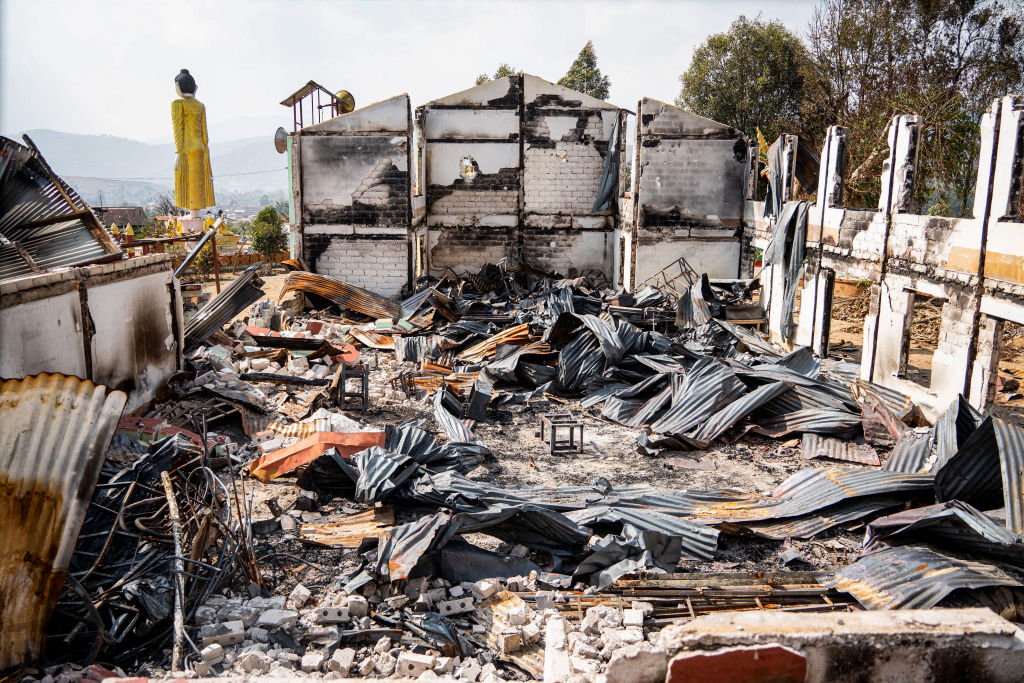China’s interests in Myanmar have long carried an inherent ambiguity. Such tension has increasingly crystallised in the aftermath of the Three Brotherhood Alliance offensive launched by opponents of Myanmar’s military regime in late 2023, which some even predict will ultimately see the fall of the military-led State Administration Council (SAC).
Beijing has long maintained ties with an eclectic array of ethnic armed organisations (EAOs), mostly located on the China-Myanmar border and often sharing kinship ties with China’s Yunnan Province. Examples include the Kachin Independence Army (KIA), Myanmar National Democratic Alliance Army and the Ta'ang National Liberation Army. The latter two groups, in conjunction with the KIA-backed Arakan Army, form the Three Brotherhood Alliance.
China’s relations with the Three Brotherhood Alliance have been driven by the necessity to secure the porous Myanmar-China border, as well as substantial business interests. These include logging and mining concessions – particularly rare earths in Kachin state.
Experts have argued that ties with these EAOs has also endowed China with a powerful lever in Myanmar’s domestic politics. A complicating factor in this opaque picture is the informal – not always explicitly state sanctioned – commercial and security relationships between EAOs and ostensibly private actors in Yunnan.
China has always looked beyond its immediate border and engaged with the central government. Myanmar’s military, the Tatmadaw, has historically had a strained relationship with Beijing – in no small part because of China’s relationship with EOAs.
Confoundingly for those who accuse China of reflexively preferring authoritarian regimes, the bilateral relationship was arguably much better under the previous Aung San Suu Kyi-led National League for Democracy (NLD) government. With its emphasis on development, the NLD was generally more conducive to advancing the China-Myanmar Economic Corridor as another leg of Beijing’s sprawling Belt and Road Initiative.
Although initially maintaining relations with the NLD post-coup, Beijing gradually stepped up its engagement with the SAC. Last year, the SAC and China signed an agreement aimed at re-starting work on CMEC’s crown jewel, the deep-water port at Kyaukphyu abutting the Indian Ocean. Beijing has also sold hundreds of millions of dollars’ worth of weapons to the Tatmadaw since the 2021 coup.

It is in northern Myanmar – specifically in Wa State and the Kokang Special Administrative Zone in northern Shan State – that another core Chinese interest has gradually emerged. Although the situation predates the coup, this area has increasingly been a hub for industrial-scale scamming operations.
Up to 20,000 people, including many Chinese nationals, have been lured to the Kokang region alone, where they are forcibly detained and put to work in cyber scam sweatshops.
Since 2009, the Kokang zone has been controlled by Tatmadaw-aligned ethnically Kokang forces. China repeatedly and with little success pressured the SAC to disband the highly lucrative scam centres. Conversely, China was much more successful in persuading the de facto independent Wa State to curb scamming operations.
The Kokang zone had once been controlled by the Myanmar National Democratic Alliance Army – one of the Three Brotherhood Alliance partners – and the group had long coveted reclaiming the area. Sensing China’s growing frustration, the opportunistic result was the late October 2023 offensive, dubbed Operation 1027. Groups that had previously eschewed direct coordination or confrontation with the SAC came to operate under the one umbrella.
Fighting has now spread far beyond northern Myanmar, as other EAOs sense the weakness of the military regime. Outposts have been lost across the country – including at least four major bases.
The extent of China’s involvement in Operation 1027 is unknown. However, close observers argue that it is inconceivable that the Three Brotherhood Alliance acted without at least tacit support from Beijing. China has since negotiated a tenuous ceasefire. The SAC has become sufficiently alarmed to enact its highly unpopular conscription law, which opponents of the regime likely view as a golden recruitment opportunity by capitalising on discontent.
These developments are challenging for Beijing. China is in many ways in an invidious position, being blamed by both the SAC and resistance forces for enabling the activities of the other, despite only exercising varying degrees of influence over each side. Chinese business interests have also been consistently attacked since 2021.
But the present situation is not entirely disadvantageous. The SAC’s desperation makes for more favourable negotiating dynamics vis-à-vis CMEC. The timing of the recent deal for the port at Kyaukphyu may be instructive, even allowing for the fact that reports last month of rocket fire just ten kilometres from the region are hardly propitious.
In essence, China wants an SAC that is powerful enough to maintain public order, but weak enough to tolerate Beijing’s relationship with EOAs and its geoeconomic vision for Myanmar. Squaring this circle without becoming ever more involved in Myanmar’s messy domestic politics will be no mean feat.

